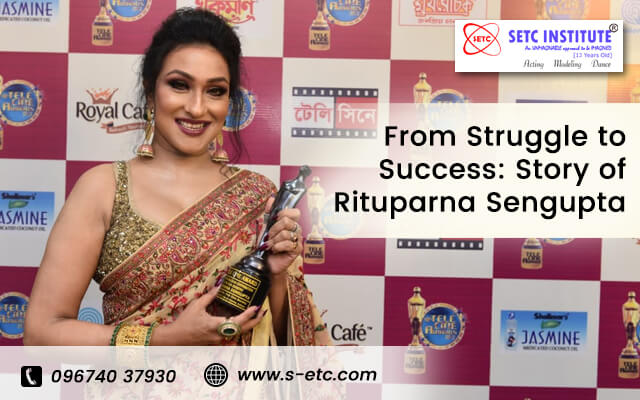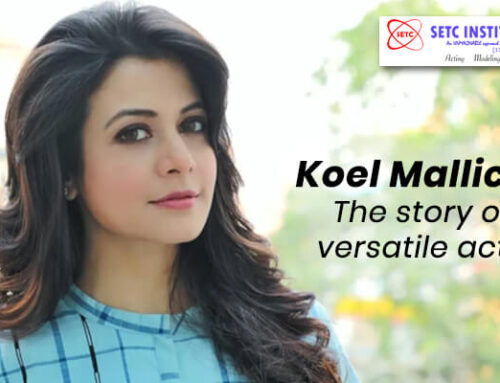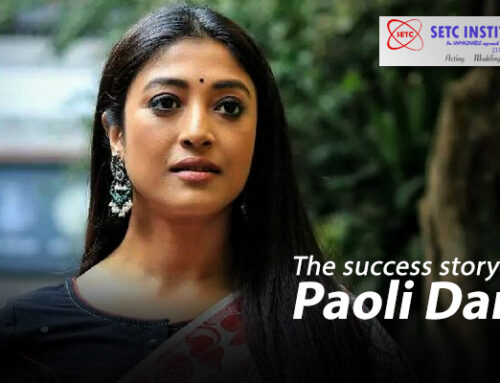Rituparna Sengupta, born on 7th November 1970, is a well-known name in the Indian film industry. She is a talented actress who has acted in a wide range of films, from serious dramas to light-hearted comedies. However, her journey to success was not easy. Here, the teachers of an acting institute in Kolkata will discuss the inspiring story of Rituparna Sengupta and how she overcame struggles to achieve success in the film industry.
The beginning:
From a young age, she had an interest in arts and learned singing, painting, and dancing from a school named “Chitrangshu”. Later, while pursuing her MA, she had to put her studies to a halt to focus on her dreams of becoming an actress.
Journey towards success:
According to the teachers of an acting institute in Kolkata, Sengupta got an opportunity to make her screen debut in the Bengali TV series “Shwet Kapot” (1978) opposite Kushal Chakraborty. However, her father was reluctant to allow her but later agreed for the two-day shoot. The show grabbed media’s attention, and soon, she got another role in Ramen Adhikari’s “Hortoner Golam”. Afterwards, she made her debut on the big screen in an Odia movie named “Kotia Manish Gotiye Jaga” (1991) opposite Bijay Mohanty.
Though she was initially promoted as the look-alike of “Satabdi Roy”, through her hard work and dedication, she was able to make a mark for herself in the industry. Her efforts caught the spotlight and she was offered a role in the National Award-winning Bengali film “Shwet Pathorer Thala” (1992), which brought her recognition in the industry. The actress then worked opposite Prosenjit Chatterjee and Chiranjeet Chakraborty in films like “Nag Panchami” and “Laal Paan Bibi”. Both movies were released in 1994, and the success of these films made her a prominent name. During this time, she made her Bollywood debut in the movie “Teesra Kaun” opposite actor Chunkey Pandey, but the movie failed to make its mark at the box office.
She then bagged another role in “Sujan Sakhi”, which was a remake of Khan Ataur Rahman’s “Sujon Sakhi”. The film was a major hit at the box office. Another one of her successful movies was “Bhagya Debata”, where she starred opposite the eminent Bengali actor Mithun Chakraborty.
Her roles opposite Prosenjit Chatterjee were deeply loved by the audience. As a result, both of them were cast together in a series of commercially successful films such as “Matir Manush”, “Mayar Badhon”, “Sindur Khela”, “Sasurbari Zindabad”, and so on.
The duo also sparked controversy in the film industry. There were speculations about the nature of their relationship which affected Rituparna’s image. However, the actress did not let these controversies negatively impact her. She continued to work in critically acclaimed movies like Rituparna Ghose’s “Dahan” (1997), “Utsab” (2000), and Aparna Sen’s “Paromitar Ek Din” (2000).
Setback & Re-emergence:
Between the years of 2008 to 2011, she starred in movies like “Chaturanga” and “Mahanagar@Kolkata”. Both these films received critical acclaim but failed to achieve commercial success.
Her setback did not stop her from pursuing more challenging roles. Eventually, her film “Rajkahini” received box office success. Though she missed the National Award for Best Actress, her role in this movie was critically acclaimed. Some of her more prominent roles were in movies like “Praktan”, “Mukherjee Dar Bou”, and “Belashuru”. In 2012, she starred in a Bengali movie “Muktodhara” where she trains a group of convicts in the correction cell to perform on Rabindranath Tagore’s famous dance drama Valmiki Pratibha, recounts a teacher of dance institute in Kolkata.
Conclusion:
Rituparna Sengupta’s journey from struggle to success serves as an inspiration to aspiring actors and individuals striving to achieve their dreams, says the teachers of an acting institute in Kolkata. She showed us how through sheer determination, perseverance, and unwavering passion, one can achieve success.






